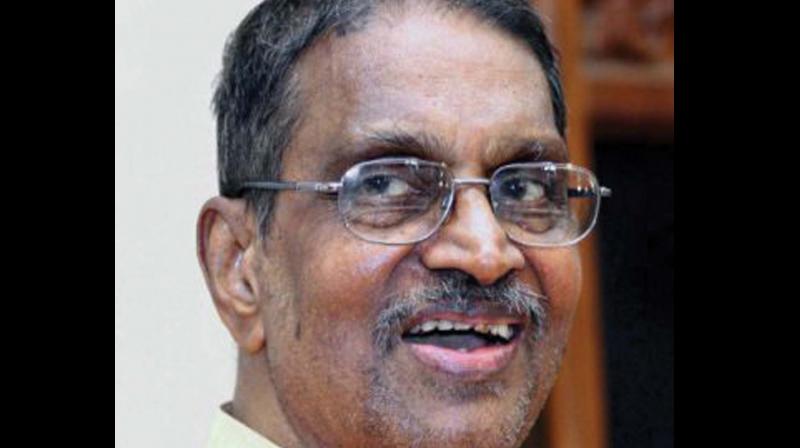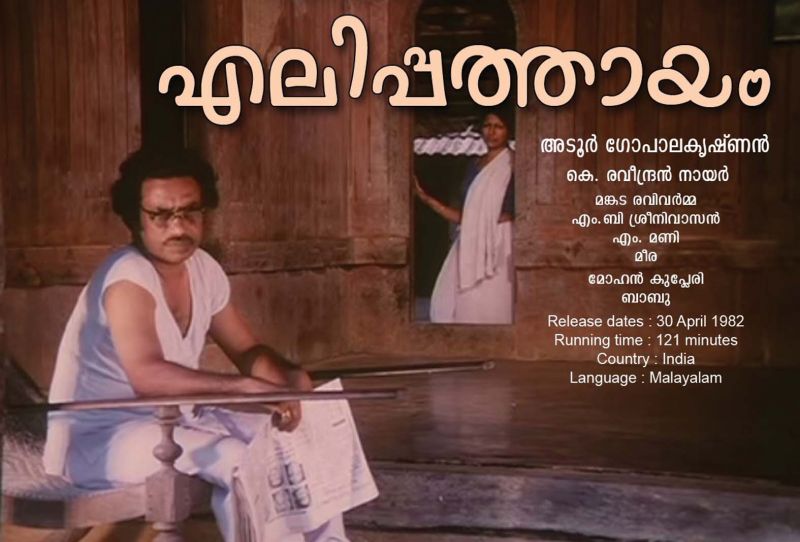Nuts and bolts of new wave
The new wave in Malayalam Cinema owes a great lot to Adoor Gopalakrishnan and the late G Aravindan.

Kollam: Francois Truffaut had once famously said that getting a creative high was for mere mortals like filmmakers. As for the producer, Truffaut awe-inspiringly called him God. “He is the indulgent father, the loving giant, who smiles encouragingly when we children, the filmmakers, fiddle with the toy called aesthetics,” the French New Wave master had said. If there is one producer in Malayalam who could perfectly fit Truffaut’s ‘loving giant’ ideal, it would be K Ravindran Nair of General Pictures. Mr Nair had willed the Malayalam New Wave into being, picked up relative unknowns like M T Vasudevan Nair, G Aravindan and Adoor Gopalakrishnan and encouraged them to fiddle with their toy called creativity as much as they wanted. Together, they made history And like gods, he had lot many things to bother about besides letting people make good films. He was a legendary industrialist who generously gave jobs, and contributed much to the cultural and industrial growth of Kollam. And like gods, he never discriminated. He funded filmmakers who went along the beaten path, and also the ones who liked to go off-beat. It is now 50 years since General Pictures made its first feature, ‘Anweshichu Kandethiyilla’, in 1967.
The film, directed by P Bhaskaran, won the national award for the best film in Malayalam. It was the huge commercial success of his fourth film ‘Achani’ (directed by A Vincent) that gave him his most popular alias, Achani Ravi. He was also a pioneering philanthropist. Mr Ravi used the proceeds from ‘Achani’ to construct the Public Library in Kollam, Sopanam auditorium, and associated building complexes for the public. He has also generously funded the ICU, children’s ward and blood bank of the district hospital. His foray in parallel cinema was prompted by a remark made by G Aravindan during a function at Kollam Press Club. “Aravindan asked why good films were not made frequently. He said producers were not coming forward to invest money for such films. This set me thinking and I thought it was high time we gave talented filmmakers with rich artistic vision some opportunities,” Mr Nair said.
Thus was born ‘Kanchana Seetha’, the 1977 classic re-telling of Ramayana that won Aravindan the National Award for best director. He did five films with G Aravindan. With the other big name of the Malayalam New Wave, Adoor Gopalakrishn-an, he made four. “My association with Adoor Gopalakrishna-n started when he was in Kollam with activities of his film society. Then, his Chithralekha Film Society had screened Satyajit Ray’s ‘Pather Panchali’ in SNV palace in Kollam.” ‘Elippatha-yam’ (1981), the first association of General Pictures with Adoor, made Mayalam cinema a name to reckon with globally. “That year, I produced three movies in a row. Apart from ‘Elippathayam’, I also produced ‘Pokkuveyil’ (Aravindan), and ‘Manju’ (M.T. Vasudevan Nair),” Mr Nair said. It was an experiment that succeeded big time creatively, but fetched mixed results commercially. ‘Elippathaya-m’ was accepted by the public but the other two did not perform that much though those films were good. Adoor’s ‘Vidheyan’ (1993) was the last film he produced.
When Mr Ravi tells that he believes only in good films and not in commercial or art ones, it cannot be brushed aside as mere rhetoric. “Whether the film is art or commercial, good films will always have audience. When I produced films that were bracketed as ‘art’, those films too made money just like my more mainstream films,” he said. Though a leading cashew exporter, he was a socialist at heart. “My father made me study in the Cantonment school here, which is a public school were people from the lowest strata of the society come for schooling. I mingled with them and that made me understand their problems and the harsher side of life,” Mr Ravi said. One real-life image that had haunted him all his life was the sight of destitute children in his class vomiting ‘muringa’ leaves. “I later realized that they had nothing to eat at home except for these leaves that they consumed with a pinch of salt,” he said.
The man who has seen a thousand full moons, Mr Ravi is 84, cannot help but chuckle at the irony that life is. “I wanted to become a doctor, but ended up in the cashew business that is based on speculation,” he said. Perhaps, it is this life on the edge that had given him the equanimity for which he is known. “When I am in fear of losing money, I remember my father’s words: never be excited about success or be dejected by failure,” he said. An exporter’s unlikely thirst for art and literature betrays a philosophical bend of mind. “Throughout my life, I was in a desperate quest to know the secret of life. Why this life? Where do we come from? And where do we go after this? I began learning the Vedas and Bhagavad Gita much later, after I became a businessman. A Sanskrit teacher used to visit my house to teach me,” he said. He has not got the answers, but more questions. Three years back, his wife Usha Ravi died. “Where has she gone? I am not aware of,” he mutters, as if to himself.



